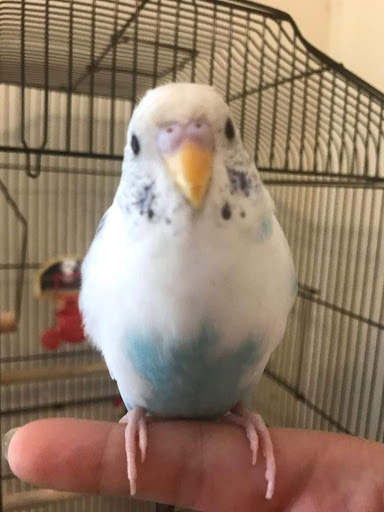Chamblee Students’ Exotic and Unusual Pets

Zainab Shah’s parakeet outside of his cage
“It’s honestly really not that different [from having dogs and cats]. I mean, they obviously go outside more in comparison to a dog or cat, and they eat different food. But for the most part, even if we didn’t give them certain special foods, they’d be just fine because they can just eat our grass,” said Ryann Callaway (’23), who has pet sheep.
Pets are a staple of the American home, with almost 40% of households possessing at least one dog and just over 25% having at least one cat, according to the American Veterinary Medical Association.
While dogs and cats can be very fun pets, some Chamblee students own animals that aren’t as common as your usual feline or canine friend.
“I’d say taking care of a turtle is a lot easier than a dog or cat. For my turtle, I just change the water every few weeks or so. And then I just like feed it five little pellet things and sometimes dried worms and that’s pretty much it,” said Anna Zhai (‘23).
Zhai’s red-eared slider, affectionately referred to as “the turtle,” has had a place in their household since her birth. While caring for a turtle can be a bit different than your average mammal, they’re still fun to have around the house.
“Sometimes I take him out of the tank and put him in the living room on the carpet and then my dog will just run around him,” said Zhai.
While many people think of non-mammalian animals first when it comes to exotic pets, some students live with some unexpected mammals, which can brings concerns other pet owners don’t share, such as predatory animals.
“We’re always a little bit concerned about coyotes, but [the sheep are] very territorial animals surprisingly, and we do keep a watch on them. We have cameras now to watch our sheep just to make sure they’re okay when we’re out,” said Callaway.
While many families spend months or even years deliberating whether or not to get a pet before finally deciding on it, sometimes it’s just meant to be.
“We didn’t really originally plan on it. We had found sheep on the side of the road that were someone’s and my dad brought them home with no explanation. He got attached to the sheep after we had to bring it back to its owners. And then a month later, he just showed up at our house again with two sheep, and now they’re ours,” said Callaway.
While sheep are farm animals, they can act surprisingly similar to traditional pets.
“They eat grass. We also give them salt blocks, which you give a lot of farm animals to make sure their salt and nutrient intake is going well. My favorite thing is to give them Cheerios, it’s their favorite treat. You can throw them and they jump up and catch it. It’s like having a little dolphin. […] Sheep have this thing where they get really excited and they bounce up and down as they run,” said Callaway.
Exotic animals can also be a little more trouble than a dog, cat, or fish due to their unique abilities. In the case of parakeets, the owner must always keep an eye out.
“He could fly, so we can’t have doors open and can’t have windows open. And he’s also very tiny so sometimes he’ll crawl on the floors, so you have to make sure not to step on him. But you just have to feed him and play with him,” said Zainab Shah (‘23).
While sometimes delicate, exotic pets can be beloved pets in households.
“Those types of birds are always happy. When I need free serotonin, I just go to him,” said Shah.
Your donation will support the student journalists of Chamblee High School Blue & Gold. Your contribution will allow us to print editions of our work and cover our annual website hosting costs. Currently, we are working to fund a Halloween satire edition.

Millie Gotsch is a junior, and this is their first year on the staff. In their spare time, they love to play video games, re-watch the same movies over and over again, and take naps. In 5 years, they hope to be in a college of some sort, hopefully still taking naps. "Scott Pilgrim Versus The World" encapsulates their highschool experience.









